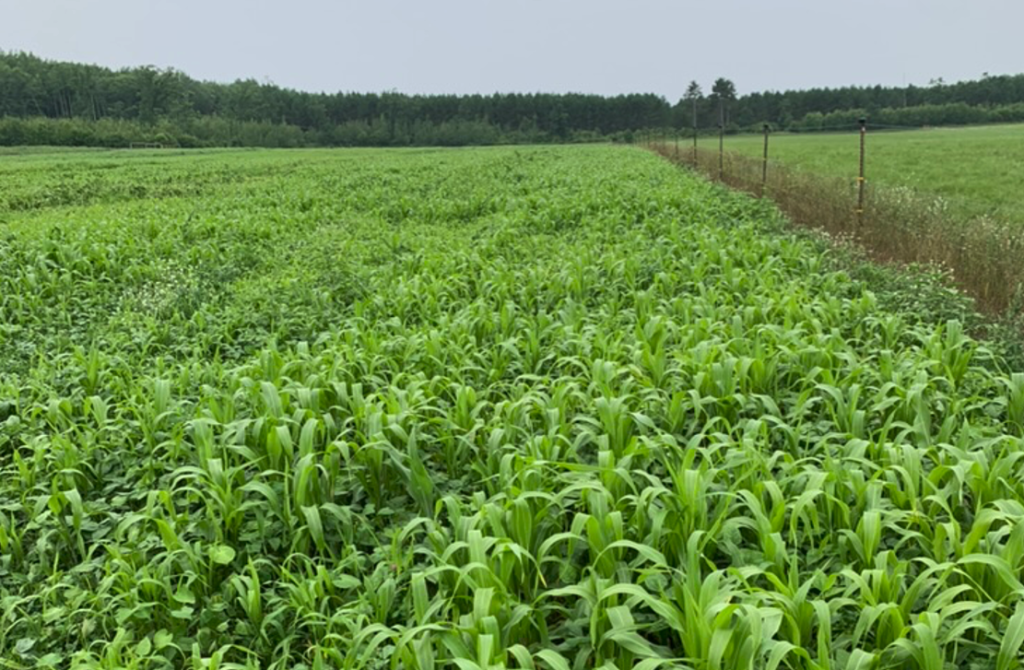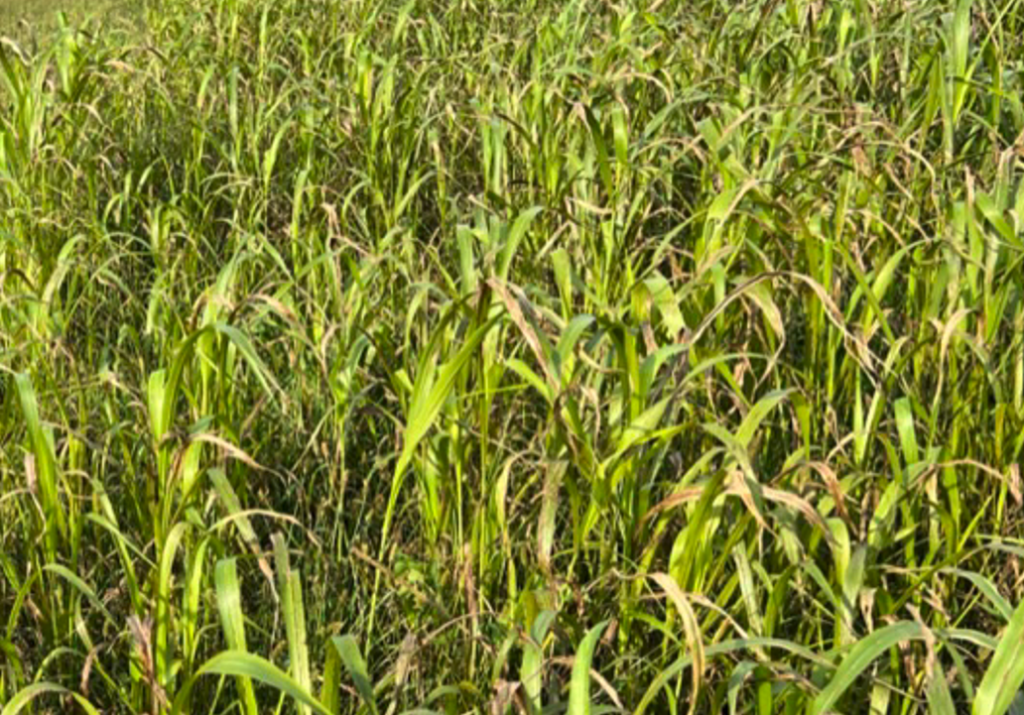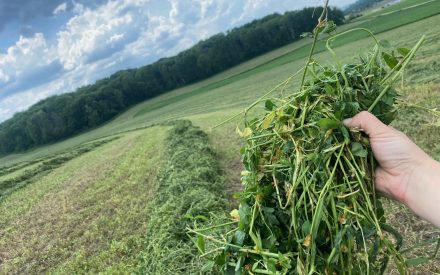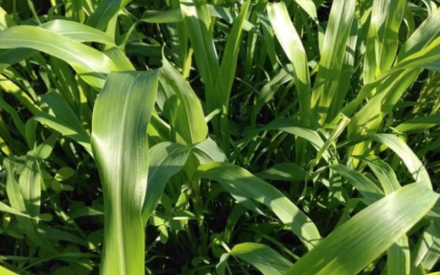Sorghum plants such as sudangrass and sorghum-sudan hybrids are tropical summer annuals well adapted to drought conditions with leaves and stems with a waxy covers that limits water losses. They are widely grown for grazing, silage as well as green chop in areas that are too dry for corn.
They are also known as the ‘camel of grasses’ because of the acclimatization to limited rainfall and high summer temperatures, however, prussic acid and nitrate toxicity are two seasonal disorders that happen under certain conditions, and/or plant growth stages. Here, in the Upper Midwest because of the frequent cool temperatures that limit growth for these summer annuals, these two disorders are more likely to be a problem and some management considerations need to be strictly followed. While Prussic Acid and Nitrate Poisoning are triggered by similar seasonal conditions, they are two different forage-related disorders with different end conditions and management.
Prussic Acid
What makes prussic acid poisoning in the plants?
Also known as cyanide poisoning, it occurs when the plants are young or new tillers are less than 20 inches tall. Risk of prussic acid toxicity temporarily occurs when leaf or stems (regardless of height) are killed by freezing.
Sorghum plants have a compound called ‘dhurrin’, that exists in the plant tissue in large cell membrane or storage areas called vacuoles. This ‘dhurrin’ is a precursor in the production of the lethal cyanide. Thus, when the tissue is broken down, by either ‘freeze’ or rumen microbes, the enzymes in the cell metabolize or transform ‘dhurrin’ into prussic acid (also known as HCN, or cyanide gas), which is highly poisonous.
When does danger of prussic acid exist?
- Avoid grazing when plants are less than 20 inches tall. Stands are generally ready to be used around six weeks after planting but if plants are younger or shorter than 20-inches they may present a risk.
- Avoid grazing frosted plants. You could graze frozen plants after four days to a week to allow for the prussic acid gas to volatilize.
- Be careful with frozen stands, as cattle may avoid the frozen portion and go for young tillers at the base of the plant which can be extremely toxic.
- Avoid stunted growth during drought.
- Stands that are high in N but are deficient in phosphorus or potassium have a is risk of prussic acid. Split N fertilizer applications.
- Hay and silage are made from mature plants which are low in prussic acid toxicity.
- In hay, any prussic acid dissipates (or volatilizes) through curing.
- In silage prussic acid disappears after one or two weeks.
- If available in the market, use varieties low in prussic acid.
- Cattle, sheep and goats are affected by prussic acid poisoning while horses and swine are not susceptible.
Nitrate Toxicity
What makes nitrate toxic in plants?
While nitrate-nitrogen is one of the main forms in which plants take up nitrogen, the other one being ammonium, consumption of pasture or hay with large amounts of nitrate in forages has negative effects in animals. Excess nitrate in plants of more than 1.5% [15,000 parts per million (ppm)] is highly toxic to livestock. Excess nitrate-nitrogen consumed, converts to nitrite-nitrogen and it is the excess nitrite that leads to methemoglobin, a form of hemoglobin that lacks oxygen-carrying ability, inhibiting the ability of blood to transport oxygen to tissues, and causing respiratory distress that can be lethal. Nitrate toxicity not only occurs in sorghum or sorghum-sudan hybrids, but in pearl millet, corn, wheat and oats.
When does danger of nitrate toxicity exist?
- Toxic nitrate levels can be achieved when the crop growth is stunted or affected by drought or excessive cloudy days, or unbalanced fertility.
- Greatest risk occurs in soils that have received heavy N applications, especially soils high in organic matter.
- Lower sections of the stalk or stem tend to accumulate higher concentrations of nitrate. Unlike prussic acid, which can dissipate quickly over time, nitrates levels once high they are likely to remain high. One way of reducing the concentration is to utilize the forage at a higher stubble height (10 to 12 inches). Forages that are high in nitrates need to be diluted with other forage or fed in small amounts.
- All livestock can be affected by nitrate poisoning.
In summary, prussic acid poisoning and nitrate toxicity are distinct forage-related disorders that can be managed with appropriate precautions and understanding of the specific risk factors. By implementing proper management practices, livestock producers in the Upper Midwest and similar regions can utilize sorghum plants effectively while mitigating the risks associated with these disorders.



 Summer Annual Forages: Diversify your feed
Summer Annual Forages: Diversify your feed ▶ Watch: Focus on Forage Cover Crops
▶ Watch: Focus on Forage Cover Crops Growing successful late-summer and spring planted forage crops
Growing successful late-summer and spring planted forage crops Focus on alternative forages
Focus on alternative forages


